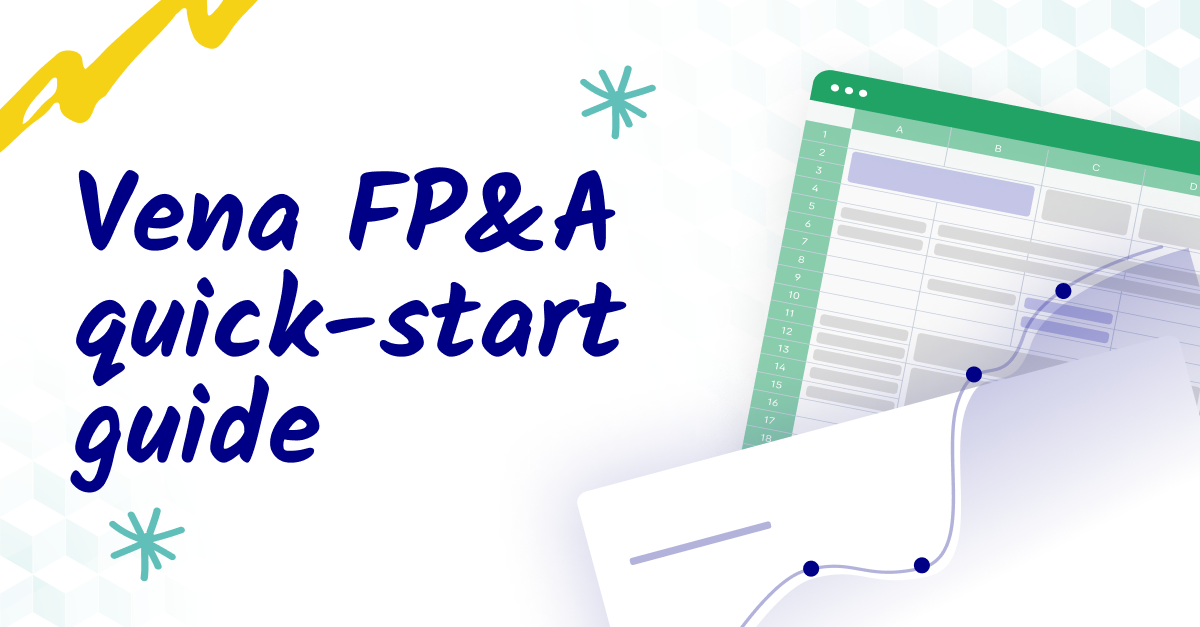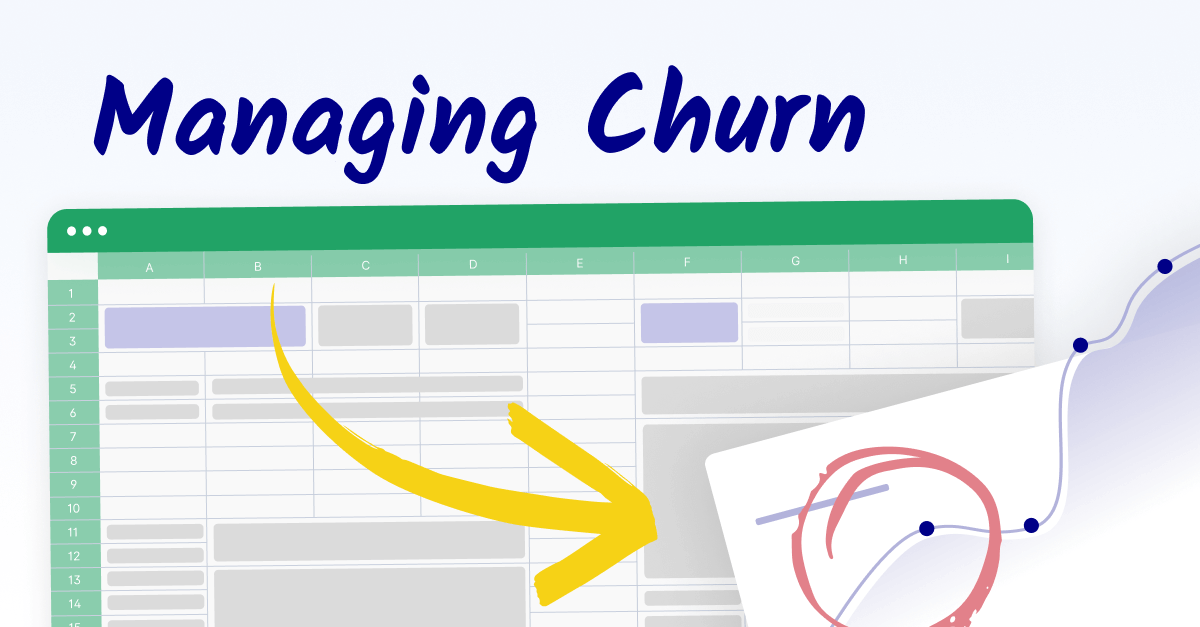The essentials of revenue planning for SMBs
SMBs often operate as organizations with leaner margins and less wiggle room when it comes to financial errors. A misstep in revenue planning can lead to serious consequences: cash flow shortages, missed opportunities for growth, or even the inability to meet basic operational costs. It's about more than just predicting sales; it's about ensuring the financial health and resilience of the business.
On the flip side, effective revenue management can set an SMB up for success. It means being able to forecast and prepare for market fluctuations, allocate resources wisely, recognize revenue, and make strategic decisions that drive growth. It's about creating a financial roadmap that guides the business through uncertainty and change.

Why revenue planning software is a game-changer for SMBs
Revenue management software is increasingly becoming an indispensable tool for finance leaders in SMBs. At its core, it brings a level of precision and efficiency to the revenue planning process that is difficult to achieve manually.
Here’s why it’s a game-changer:
1. Increases data accuracy
With revenue management software, SMBs can say goodbye to the error-prone world of spreadsheets. Automated data collection and processing mean fewer mistakes and a more reliable financial forecast.
2. Saves time
Time is a precious commodity in SMBs, and these tools are designed to save it. Automating repetitive tasks frees up finance leaders to focus on strategic decision-making rather than getting bogged down in data entry.
3. Informs decisions
The software provides a wealth of data analytics and reporting features. This means finance leaders can base their decisions on solid data, identify trends, see revenue reports and make informed predictions about future revenue streams.
4. Boosts scalability
As SMBs grow, their financial processes need to scale with them. Revenue management software is built to grow, handling increased data volume and complexity without missing a beat.
5. Integrates with existing systems
Many revenue management software options offer integration with other business systems like CRM and ERP. This integration allows for a holistic view of the business, ensuring all financial decisions are aligned with the company's overall strategy and operations.
6. Provides accessibility
Cloud-based revenue management software solutions provide accessibility and collaboration that were once the domain of larger enterprises. This means finance teams can work and plan together in real-time, even from different locations.
Revenue management software equips SMBs with the tools to not only keep pace with their larger competitors but to carve out their niche in the market.
For finance and FP&A leaders, it's not about having the most sophisticated revenue recognition system but the right one that meets the specific needs of their SMB. By leveraging the power of this software, SMBs can transform their revenue management system from a challenge into a strategic asset.
Key features of revenue management software for SMBs
When small and medium-sized businesses (SMBs) search for revenue planning software, the aim is to find a solution that addresses their specific needs without overwhelming them with complexities. Here's a look at the essential features that make revenue management software invaluable for SMBs:
1. Scalable forecasting
This allows SMBs to tailor their forecasting to match their current operations while providing room for growth. Whether it's managing day-to-day finances or planning for expansion, scalable forecasting helps businesses stay prepared.
2. Scenario planning
In the ever-changing business landscape, scenario planning helps SMBs prepare for various eventualities. Whether it's a sudden market downturn or a rapid growth opportunity, being able to quickly adjust plans is crucial.
3. Integration capabilities
Revenue management software should easily integrate with existing systems like CRMs and ERPs. This ensures a seamless flow of data, allowing for more accurate and comprehensive financial analysis.
4. User-friendly interface
Time is a precious resource for SMBs. A user-friendly interface with straightforward reporting and dashboards means less time learning new software and more time making informed decisions.
5. Collaboration features
Finance is a team effort, and the software should facilitate this. Features that allow multiple users to work together, share insights, and develop strategies are essential for cohesive planning.
Selecting revenue management software with these key features enables SMBs to not only understand their current financial position but also to effectively plan for a prosperous future.
Choosing the best revenue planning software for your business
Choosing the best revenue management software for your business can feel like a monumental task, especially for SMBs with unique needs and constraints. Here's a practical approach to finding the perfect fit:
1. Assess your unique needs
Begin with a thorough internal assessment. Consider the complexities of your revenue streams, the size of your finance team, and the specific pain points in your current planning process. Are you struggling with data silos, inaccurate forecasts, or cumbersome manual processes? Understanding these requirements will shape your criteria for selecting the right tool.
2. Feature match-up
Compile a detailed list of must-have features. Does the software need to handle multiple currencies for international transactions? Should it be able to simulate the financial impact of potential business decisions? Matching your requirements with the software’s capabilities ensures you invest in a tool that truly serves your business’s needs.
3. Scalability
Forecast the growth trajectory of your business and ensure the software can scale accordingly. Consider whether it can accommodate an increasing number of users, handle higher transaction volumes, or expand to cover new markets or product lines as your business grows.
4. User feedback
Seek out insights from peers in similar industries or businesses of comparable size to find the best revenue management software for your business. Online forums, industry conferences, and professional networks are great places to gather honest feedback. Pay particular attention to comments about customer support, ease of use, and how well the software adapts to real-world challenges.
5. Cost consideration
Take a holistic view of cost that goes beyond the price tag. Consider the software’s return on investment (ROI) in terms of time saved, accuracy improved, and insights gained. Also, factor in potential costs related to training, implementation, and ongoing maintenance.
6. Trial runs
Engage with vendors who offer demos or trial periods. This hands-on experience allows you to test the software’s interface, evaluate its ease of use, and determine how well it integrates with your existing systems. It’s also an opportunity to gauge the responsiveness of the vendor’s customer support team.
By expanding on these key points, SMB finance leaders can undertake a more comprehensive and structured approach to selecting the best revenue management software, ensuring they invest in a solution that aligns with their business’s strategic objectives and operational needs.
Implementing revenue planning software in SMBs: best practices
Implementing new revenue planning software in an SMB requires a thoughtful and meticulous approach to ensure a smooth transition and maximize its benefits. Here are some best practices to consider:
1. Secure stakeholder buy-in
Start by getting the buy-in from all stakeholders. This includes not just the finance team but also sales, marketing, and upper management. Their support is crucial for successful implementation.
2. Tailor training programs
Develop a comprehensive training program tailored to the roles and expertise levels within your team. Hands-on workshops and real-world scenario exercises can boost confidence and competence in using the new system.
3. Implement in stages
Consider a phased approach to deployment. Start with core functionalities and gradually introduce more complex features. This helps in managing the learning curve and reducing resistance to change.
4. Strategize data migration
Meticulous planning for data migration is crucial. Ensure data integrity by validating and cleaning data before migration. A clear mapping of how old data translates into the new system is vital.
5. Establish a feedback loop
Establish a feedback mechanism to capture users' experiences, challenges, and suggestions. This feedback is invaluable for tweaking the system and processes to better fit your team's needs.
6. Commit to continuous improvement
Revenue planning is not a set-and-forget process. Regularly review and update your revenue models and assumptions. Stay abreast of new features and updates in your software that can bring additional benefits to your SMB.
7. Arrange technical support
Have a clear plan for technical support. Know who to call for help, whether it's in-house IT support or the software vendor’s help desk. Swift resolution of technical issues is key to maintaining productivity.
By adhering to these best practices, SMBs can ensure a smoother transition to new revenue planning software, leading to enhanced forecasting accuracy, better strategic decisions, and ultimately, improved financial performance.
Conclusion: the road to revenue
Finance and FP&A leaders have the opportunity to harness these tools to gain deeper insights, forecast with greater accuracy, and steer their companies with confidence. By embracing these technologies, you're not just keeping up with the times; you're setting your business up for sustainable growth and success.
Want to learn how Cube can help you achieve the results you’re looking for? Request a free demo today.



.png)









.png)
.png)
.png)


.png)

